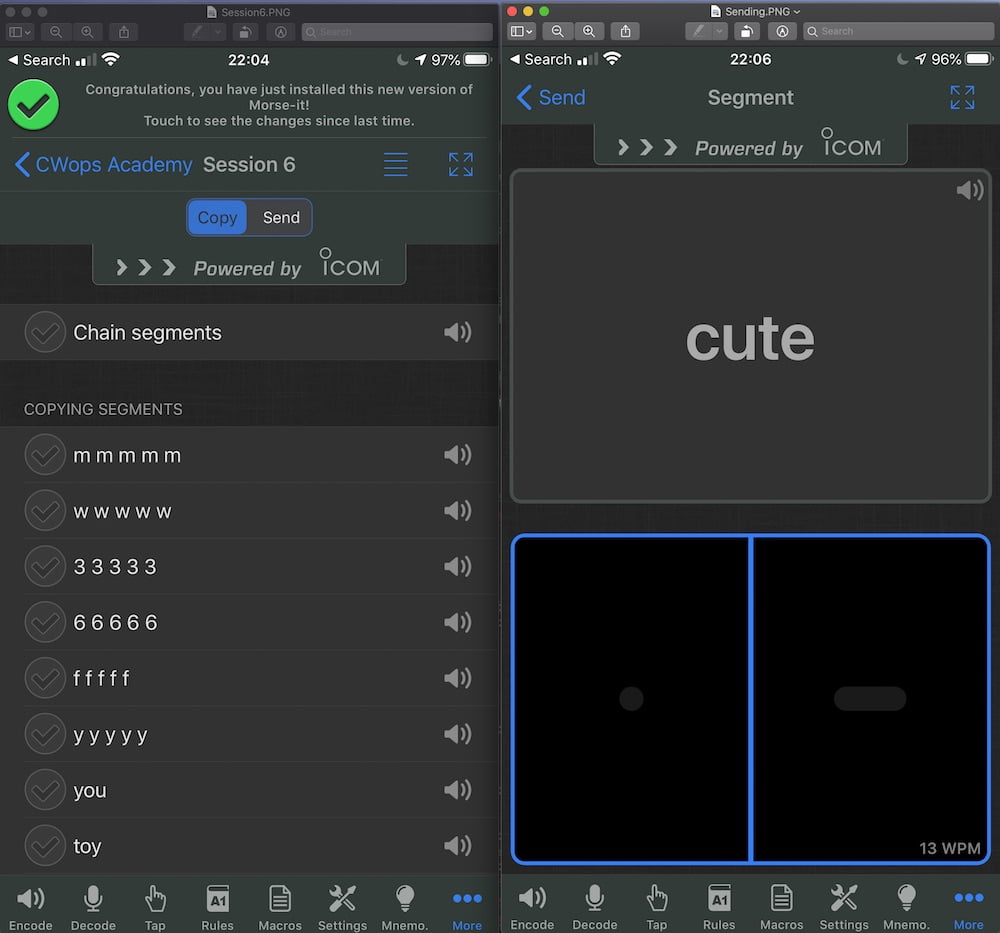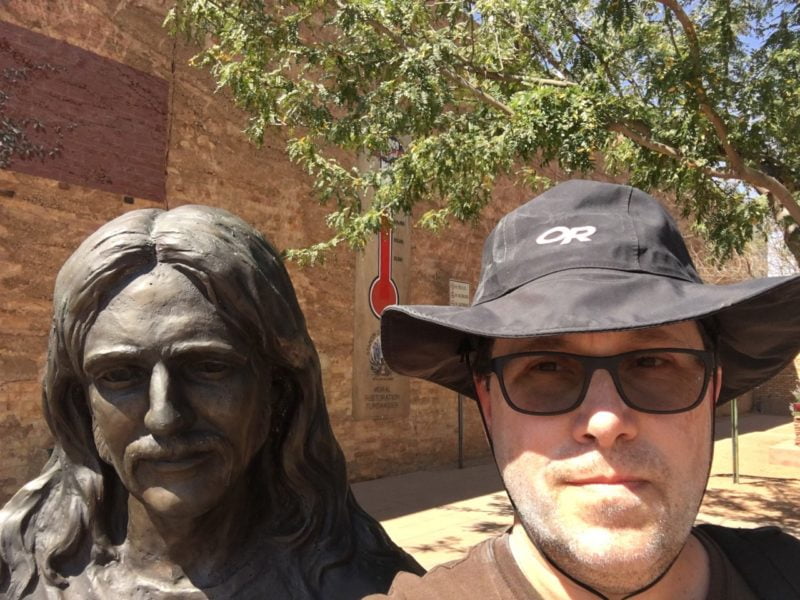Session 5, introduces the letters M and W, the numbers 3 and 6, and our first punctuation, ?. The question mark has a very distinct and musical sound. It’s also fun to do on a paddle with repeat: hold for two dots, hold two dashes, hold two dots, release. (Thanks, Mateo, for sending out the Lesson 5 mp3 file that you can listen to on headphones.)
Welcome, Session 01, 02, 03, 04, 05, 06, 07, 08, 09, 10, 11, 12, 13, 14, 15, 16
In the official CWOPS Beginner Book, it’s divided into copying segments: U, C, 2, 5, M, W, 3, 6, ? (five times each)
wait, wall, well, will, mall, mill, chum, mow, much, such, water, wet, what, dew, date, atom, tow, tower, were, where, was, wish, wash, mat, matt, mel, him, her, his, hw?, W3AA, N3AM, DM5RA, W6AM, N2AT, RW5L, ON4UN, 335, 1432, 12, 6122, well water, how is it?, is this it?, this is it
And sending segments: wait, well, mall, mill, wet, date, W3AA, N3AM, DM5RA, W6AM, N2AT, RW5L, ON4UN, 335, 1432, 6122, this is it, 1432 hill street, 1 and 4 is 5
For the bonus homework, (same as last session, and will be the same for a few more weeks) be prepared to send two groups from the “Sending Segments” and three words (or a short phrase) of your choice from the letters we’ve learned (they can be your own or from the list). I appreciated folks giving nudges for “two words” and sending again with a breath between words.
Last week, the phone app Morse Mania came up, available on Android and iOS (there is at least one other named Morse Mania, link goes to the one we’re referring). It gamifies the letters, which can be fun. The paid version ($3 on the App store) includes longer words, the most common words, pro-signs and additional levels.
I included screenshots of the Morse-It app on iOS that Paul and Bekah both mentioned with CW Academy curriculum built-in. The left panel is for listening, right panel is for sending practice. (This would be useful if you were taking public transportation)

The two programs I mentioned for practicing call signs are RufzXP and Morse Runner, and are used heavily in the Basic through Advanced classes. They’re both Windows-based programs, though you can run Morse Runner on Mac using the Wine wrapper someone made available on the download page. (Both will run in Parallels without problems.) There is a command-line equivalent of RufzXP, QRQ, that runs on anything.
- The core function of RufzXP is to send a series random call signs (or lists of words), one at a time. If you copy it correctly, it increases the speed a little bit, get partial copy or miss it, and it backs off a bit, which is to say it is always gets hard. The call signs vary in difficulty, including portable and operating in different countries. Nearly everyone hates it for the first month, then the feeling becomes somewhere between “not horrible” and “oddly fun.” There is a scoring system based on accurate copying and speed, but it’s best to look at what your average and peak wpm are.
- Morse Runner is more of a time-based contest QSO simulation. In the easiest level, you copy call signs and the serial number, then another comes along. There’s no penalty, other than time spent, on retries. In advanced levels, you have to call CQ, there are simulated pileups (mentioned last time, when a bunch of stations call you back), fading, weather effects, and the other stations making mistakes. There is a scoring system based on the number of call signs copied correctly times the different prefixes. Although I haven’t done so personally, one can apparently drop in customized call-sign and word lists.
None of these apps are used in or necessary for the beginner class, but they’re additional tools available.
Thursday’s session 6, will introduce the letters F and Y.
